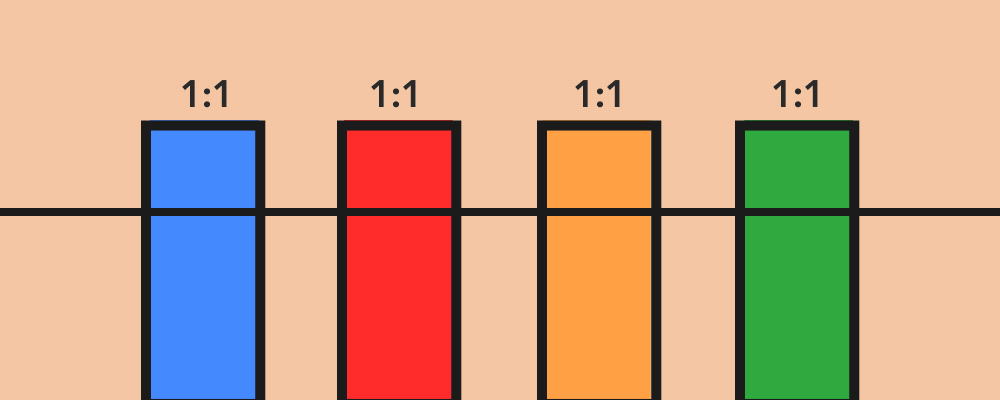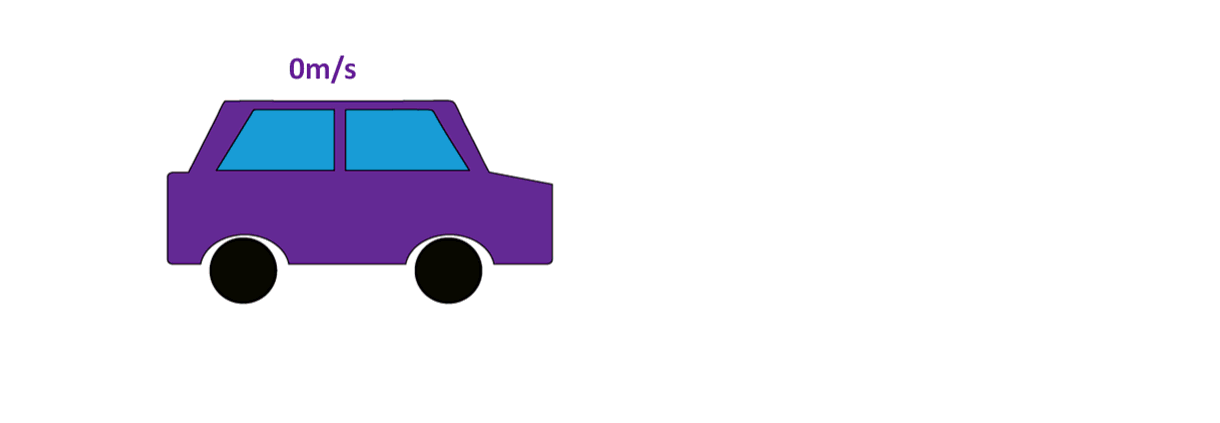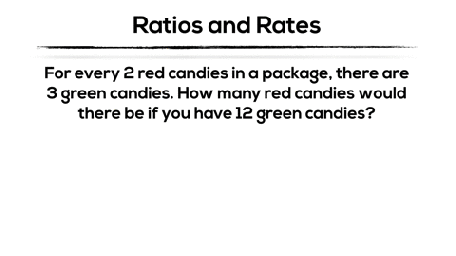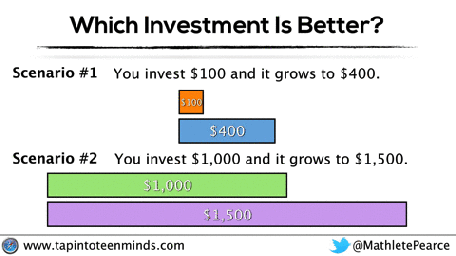
%%html
<script>
function code_toggle() {
if (code_shown){
$('div.input').hide('500');
$('#toggleButton').val('Show Code')
} else {
$('div.input').show('500');
$('#toggleButton').val('Hide Code')
}
code_shown = !code_shown
}
$( document ).ready(function(){
code_shown=false;
$('div.input').hide()
});
</script>
<p> Code is hidden for ease of viewing. Click the Show/Hide button to see. </>
<form action="javascript:code_toggle()"><input type="submit" id="toggleButton" value="Show Code"></form>
Code is hidden for ease of viewing. Click the Show/Hide button to see.
import ipywidgets
from IPython.display import display, Math, Latex, HTML, IFrame, Javascript, clear_output
from ipywidgets import IntSlider, Label, widgets, interact, interact_manual, Button, Layout, interactive
Rates, Ratios, and Proportional Reasoning¶
Math 8¶

Introduction¶
Objects do not always appear in the same size. This is true of everything in the universe. For example, what is the size of a human to an elephant? Or the size of our planet to the likes of Mars?
So, a need to compare quantities of things arises. This is needed to see how much bigger, or smaller, an amount is when compared to another.
This notebook discusses three mathematical comparison concepts. These concepts are ratios, rates, and proportional reasoning. There will be interactive problems to help you understand these concepts. Let’s start!
Ratios¶
Ratios are comparisons between two things. In its plainest form, a ratio says how much one thing is compared to another.
We will use the following illustration to help learn more about ratios:
The illustration above contains \(2\) triangles and \(4\) circles. So, the ratio of triangles to circles would be \(2\) to \(4\). This is because you have exactly \(2\) triangles and \(4\) circles.
Now, let’s think about ratios more generally:
Let’s say you have some quantity \(a\) of object \(A\). It doesn’t matter what \(A\) is; it could be potatoes, cats, pillows, you name it.
Let’s say you also have some quantity \(b\) of object \(B\). Again, it doesn’t matter what \(B\) is; it could be pennies or cars if you wanted.
Then you can say that the ratio of \(A\) to \(B\) is the number of \(As\) you have to the number of \(Bs\) you have, (\(a\) to \(b\)).
Ratios can also be written in different ways:
Use a colon, (\(a : b\)), to separate the values.
Use the word “to”, (\(a\textrm{ to }b\)), to separate the values.
Use a fraction, (\(\frac{a}{b}\)) to separate the values.
So, we can write the ratio of the example above in the following ways:
a) \(2 : 4\)
b) \(2 \textrm{ to } 4\)
c) \(\frac{2}{4}\)
According to our definition of a ratio, for every \(2\) triangles, there are \(4\) circles. But, we can also compare triangles and circles by scaling the ratio. This is also known as an equivalent of the ratio or equal ratio.
We can get an equal ratio by either multiplying or dividing each term in the ratio by the same number, (Just not by zero). So, since the ratio of triangles and circles is \(2 : 4\), we can divide both sides of the ratio by \(2\) to get \(1 : 2\). This means there are \(2\) circles for \(each\) triangle, and it can be divided into \(2\) groups.
Let’s try the following problem:
#Used to ensure the description text doesn't get cut off.
style = {'description_width': 'initial'}
def q_1(val):
#If the answer is correct:
if val == "2 to 1":
display("Correct!")
display("If the values are flipped, then the ratio should also be flipped.")
#If nothing is selected:
elif val == None:
None
#Otherwise, if the answer is wrong:
else:
display("Please try again.")
display("Remember, we are no longer looking at the ratio of triangles to circles.")
#a1, a2, and a3 are the possible inputs the user can put.
a1 = "2 to 4"
a2 = "2 to 1"
a3 = "1 to 2"
#Display the question.
#display(Latex("What is the ratio of circles to triangles?"))
#Create a drop down widget for answers.
interact(q_1, val = widgets.Dropdown(options=[a1 ,a2, a3],\
value = None,\
description = 'What is the ratio of circles to triangles?',\
disabled = False,\
style = style));
The following video, from LearnAlberta, demonstrates the idea of ratio with some interactive problems. You may need to enable the Adobe Flash Player for this site in your browser.
#lesson is the ratio lesson.
lesson = HTML('<center><embed width="500" height="400" src="InteractiveLesson.swf"\
frameborder="0" allow="autoplay"; encrypted-media"></center>')
#Construction of button to provide factored polynomial result.
buttonShowVideo = widgets.Button(description="Show Video")
def displayLesson(a):
display(lesson)
buttonShowVideo.close()
display(buttonShowVideo)
buttonShowVideo.on_click(displayLesson)
Exercises¶
Question 1: Jack has \(16\) pens, \(12\) pencils, and \(6\) erasers. What is the ratio of supplies to erasers?
#Construction of button to provide answer to question 1.
buttonShowAnswer1 = widgets.Button(description="Show Answer")
def displayAnswer1(a):
display(Latex(r"$34 : 6$ or $17 : 3$"))
buttonShowAnswer1.close()
display(buttonShowAnswer1)
buttonShowAnswer1.on_click(displayAnswer1)
Question 2: Jack has \(16\) pens and \(12\) pencils. If Jack gives \(4\) pens to Jill, then how many pencils does Jack have to give Jill to keep an equal ratio?
#Construction of button to provide answer to question 2.
buttonShowAnswer2 = widgets.Button(description="Show Answer")
def displayAnswer2(a):
display(Latex(r"$3$ pencils"))
buttonShowAnswer2.close()
display(buttonShowAnswer2)
buttonShowAnswer2.on_click(displayAnswer2)
Question 3: Jack delivers pizza. Fill up the following based on your ratio knowledge.
Time (hour) |
Pizza delivered (quantity) |
|---|---|
\(6\) |
\(48\) |
\( ?\) |
\(64\) |
\(7\) |
\(?\) |
#Construction of button to provide answer to question 3.
buttonShowAnswer3 = widgets.Button(description="Show Answer")
def displayAnswer3(a):
display(Latex(r"$8$ and $56$"))
buttonShowAnswer3.close()
display(buttonShowAnswer3)
buttonShowAnswer3.on_click(displayAnswer3)
Rates¶

GIF taken from Giphy, October 27, 2018
Rates are somewhat different than ratios. A rate is a ratio that compares two quantities of different units.
Suppose the girl in the figure above runs \(2\) kilometers in \(1\) hour. Then, the rate of the girl’s running is \(2\) km per hour, (Or \( 2 \frac{\textrm{km}}{\textrm{hour}}\)). In this example, a kilometer is the unit of distance, and hour is the unit of time. So, the running rate of the girl is comparing two quantities of different units.
Rates occur in many areas of our life:
How fast are you running? \(\rightarrow\) Kilometers per hour
What is the unit price of one of your pens? \(\rightarrow\) Price per unit
How fast are you typing? \(\rightarrow\) Words per minutes
Keep in mind that the denominator would be \(1\) during rate calculation.
Below is a video which demonstrates the real-life scenarios of rate:
from IPython.display import YouTubeVideo
YouTubeVideo('tT9A2jlL1s8')
Exercises¶
Question 1: A car travels \(88\) miles in \(11\) hours. What is the rate of speed the car travels at?
#Construction of button to provide answer to question 1.
buttonShowAnswer11 = widgets.Button(description="Show Answer")
def displayAnswer11(a):
display(Latex(r"$8$ miles per hour."))
buttonShowAnswer11.close()
display(buttonShowAnswer11)
buttonShowAnswer11.on_click(displayAnswer11)
Question 2: A car travels \(72\) miles in \(9\) hours. How many miles can the car can travel in \(25\) hours?
#Construction of button to provide answer to question 2.
buttonShowAnswer12 = widgets.Button(description="Show Answer")
def displayAnswer12(a):
display(Latex(r"$200$ miles"))
buttonShowAnswer12.close()
display(buttonShowAnswer12)
buttonShowAnswer12.on_click(displayAnswer12)
Question 3: A sedan can travel \(64\) miles in \(4\) hours. However, an SUV can travels \(48\) miles in \(3\) hours. Which car is faster?
#Construction of button to provide answer to question 3.
buttonShowAnswer13 = widgets.Button(description="Show Answer")
def displayAnswer13(a):
display(Latex(r"They travel at equal speeds"))
buttonShowAnswer13.close()
display(buttonShowAnswer13)
buttonShowAnswer13.on_click(displayAnswer13)
Question 4: Jack can deliver \(100\) newspapers in \(5\) hours, but Jill can deliver \(125\) newspapers in \(5\) hours. How many newspaper can both Jack and Jill deliver in \(7\) hours?
#Construction of button to provide answer to question 4.
buttonShowAnswer14 = widgets.Button(description="Show Answer")
def displayAnswer14(a):
display(Latex(r"$315$ newspapers in $7$ hours"))
buttonShowAnswer14.close()
display(buttonShowAnswer14)
buttonShowAnswer14.on_click(displayAnswer14)
Proportional Reasoning¶
Before beginning proportional reasoning, we will become familiar with proportions first. A proportion is a statement that two ratios, or fractions, equal:
\(\Large \frac{\textrm{a}} {\textrm{b}} = \frac{\textrm{c}} {\textrm{d}} \hspace{2cm} \textrm{or} \hspace{2cm} {\textrm{a}} : {\textrm{b}} = {\textrm{c}} : {\textrm{d}}\)
If two ratios are equal, then the cross product of the ratios is also equal:
\(\Large \textrm{a} \times {\textrm{d}} = \textrm{b} \times {\textrm{c}}\)
Let’s say you run \(20\) meters in \(4\) seconds. How many seconds will it take you to run \(100\) meters?
Assume that you wil need \(x\) seconds to run \(100\) meters. From our definition of proportion, we will get:
\(\frac{(20\textrm{ meters})} {(4\textrm{ seconds})} = \frac{(100\textrm{ meters})} {(x\textrm{ seconds})}\)
\(\Rightarrow (20\textrm{ meters}) \times (x\textrm{ seconds}) = (100{\textrm{ meters}}) \times (4\textrm{ seconds})\)
\(\Rightarrow (x\textrm{ seconds}) = \frac{(100\textrm{ meters}) \times (4\textrm{ seconds})} {(20\textrm{ meters})}\)
\(\Rightarrow (x\textrm{ seconds}) = 20\textrm{ seconds to run 100 meters.}\)
We can view this problem visually:

Running image taken and modified from VectorStock, October 27, 2018
Now, we can begin discussing what proportional reasoning is:
Proportional reasoning is the ability to compare two quantities and predict the value of one based on the values of another. We do this using multiplication.
In the example above, the distance of \(100\) meters is \(5\) times larger than the initial distance, (\(20\) meters). This is the case since:
\( 5 \times (20\textrm{ meters}) = (100 \textrm{ meters}) \)
So, the time required to travel \(100\) meters will be \(5\) times of the initial time:
\( 5 \times (4\textrm{ seconds}) = (20 \textrm{ seconds})\)
This problem is a proportional reasoning problem.
Below is a video that demonstrates the idea of proportional reasoning:
%%html
<iframe width="560" height="315" src="https://www.youtube.com/embed/TTsLGvHve2E" frameborder="0" allow="accelerometer; autoplay; clipboard-write; encrypted-media; gyroscope; picture-in-picture" allowfullscreen></iframe>
This video was created by the YouTube channel Program Innovation and can be found at: https://youtu.be/TTsLGvHve2E
Exercise¶
Question 1: Jack has \(8\) pens and \(4\) pencils. Jill has \(10\) pens. If both have the same proportion of pens to pencils, how many pens does Jill have?
#Construction of button to provide answer to question 1.
buttonShowAnswer77 = widgets.Button(description="Show Answer")
def displayAnswer77(a):
display(Latex(r"Jill has $20$ pencils"))
buttonShowAnswer77.close()
display(buttonShowAnswer77)
buttonShowAnswer77.on_click(displayAnswer77)
Question 2: A Sedan car drives \(4\) km in \(2\) hours, while an SUV drives \(36\) km. If the SUV drives at the same proportional rate as the Sedan, how many hours will it take the SUV to drive \(36\) km?
#Construction of button to provide answer to question 1.
buttonShowAnswer88 = widgets.Button(description="Show Answer")
def displayAnswer88(a):
display(Latex(r"It will take the SUV $18$ hours to drive 36 km."))
buttonShowAnswer88.close()
display(buttonShowAnswer88)
buttonShowAnswer88.on_click(displayAnswer88)
Question 3: A cobra grows \(2\) meters in \(18\) days, while a python grows \(9.5\) meters in \(81\) days. Which types of snake has faster growth?
#Construction of button to provide answer to question 1.
buttonShowAnswer99 = widgets.Button(description="Show Answer")
def displayAnswer99(a):
display(Latex(r"The python grows faster."))
buttonShowAnswer99.close()
display(buttonShowAnswer99)
buttonShowAnswer99.on_click(displayAnswer99)
Conclusion¶
In this notebook, we introduced three important concepts of mathematics: Ratio, Rate and Proportional Reasoning.
Let’s review what we have learned:
A ratio is the comparison between two things.
A rate is a type of ratio that also compares two things but in different units.
Proportional Reasoning also compares two things based on multiplicative thinking.





